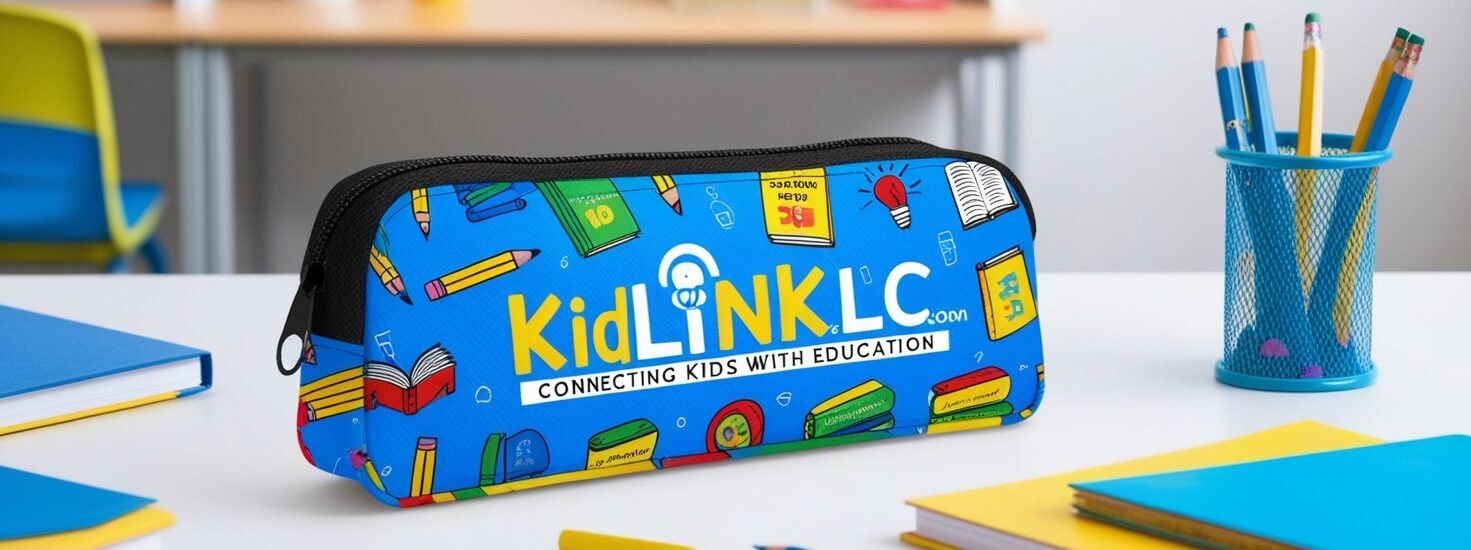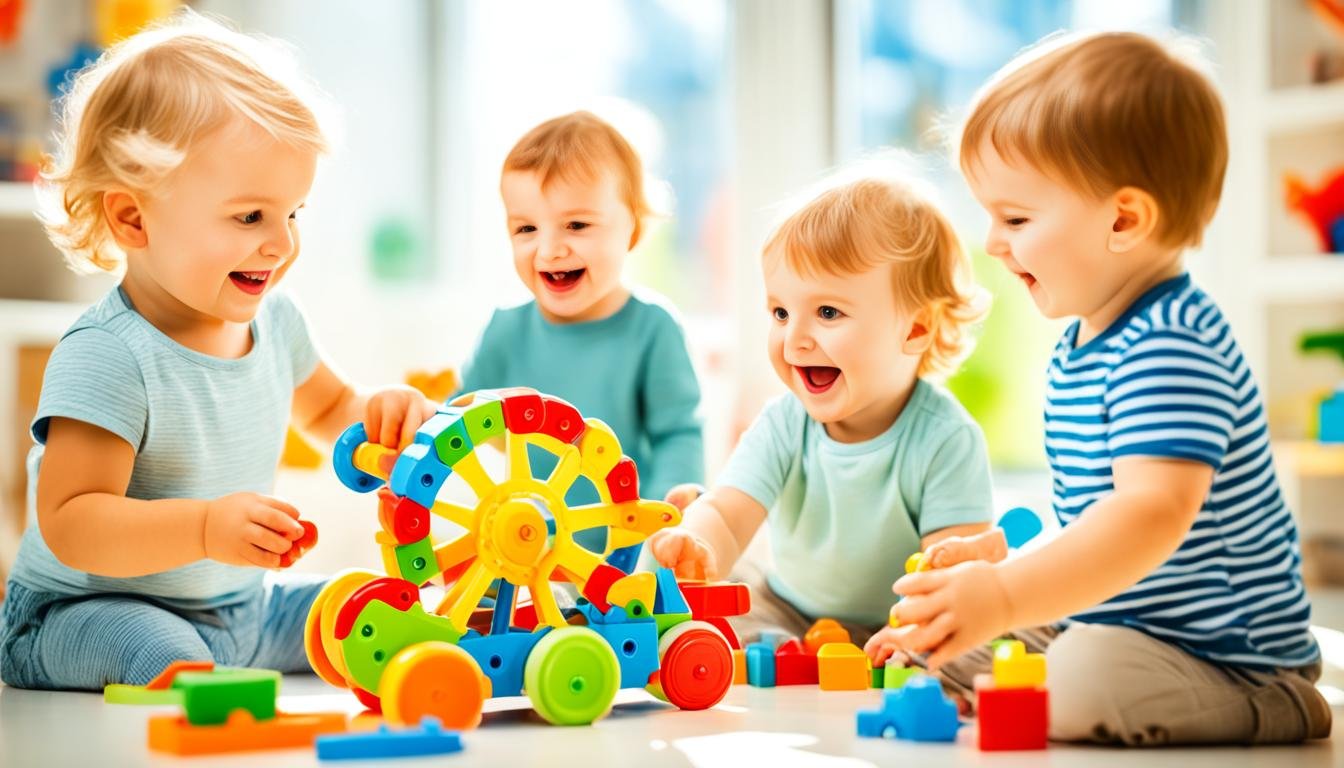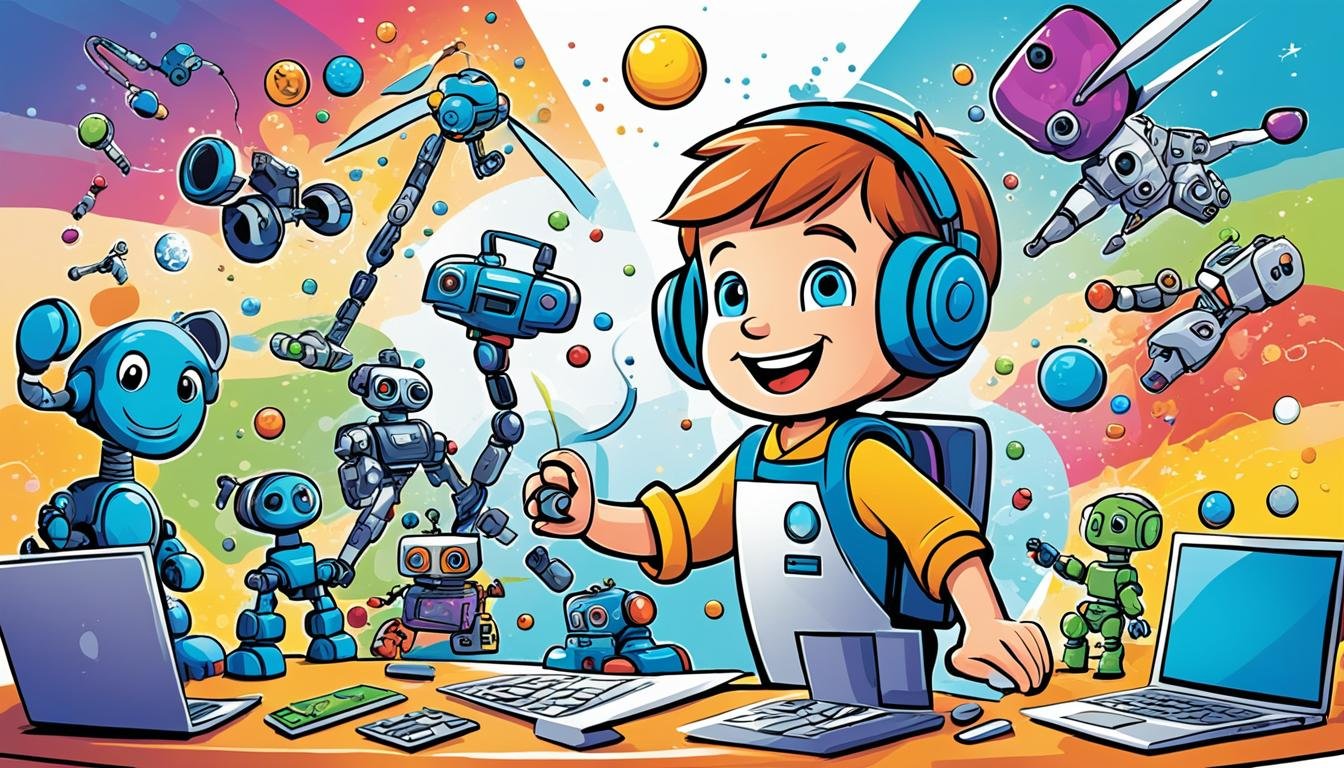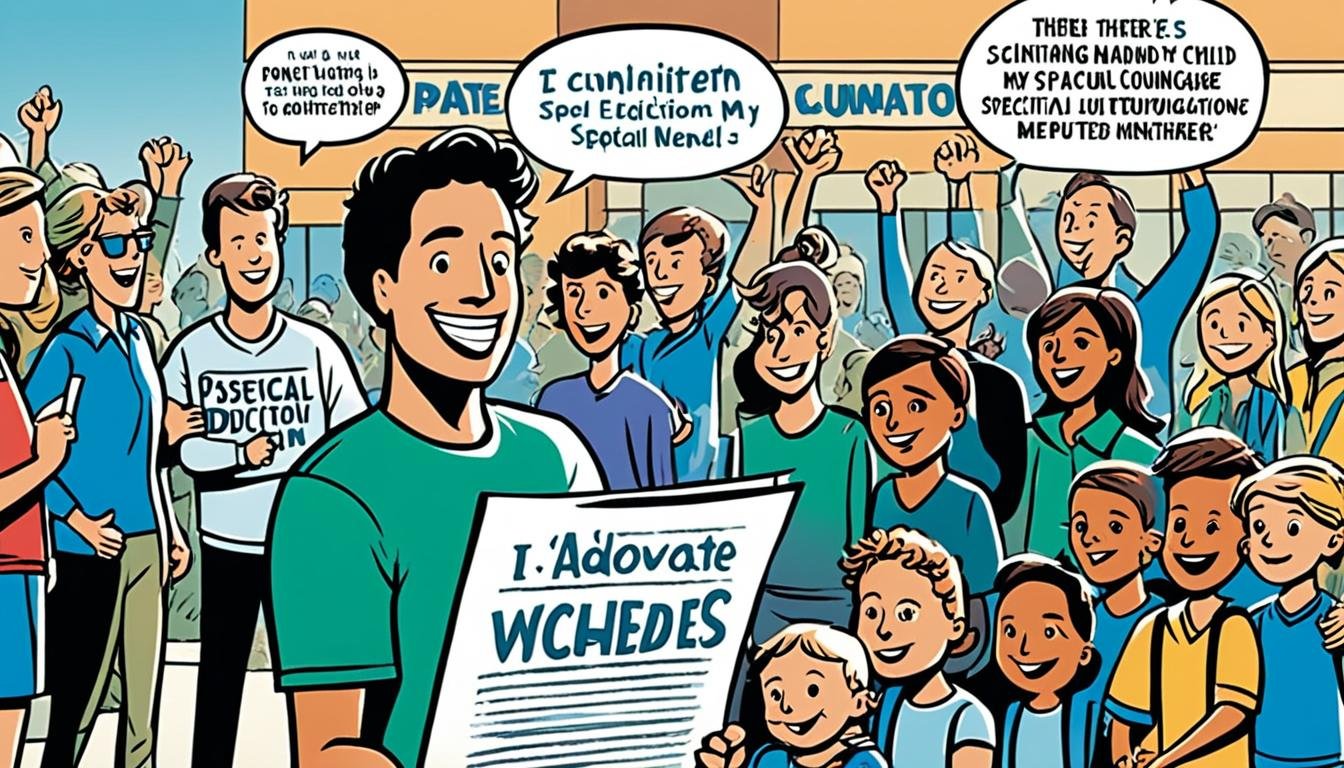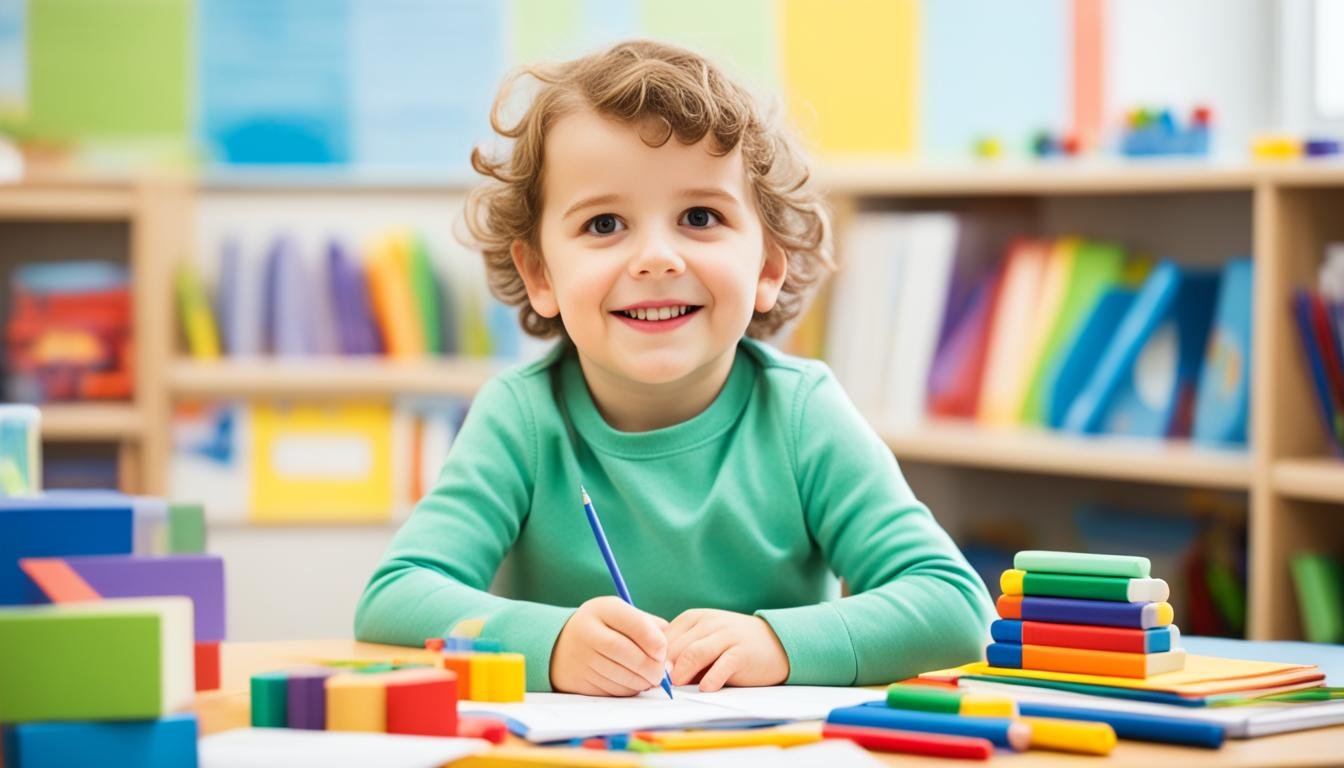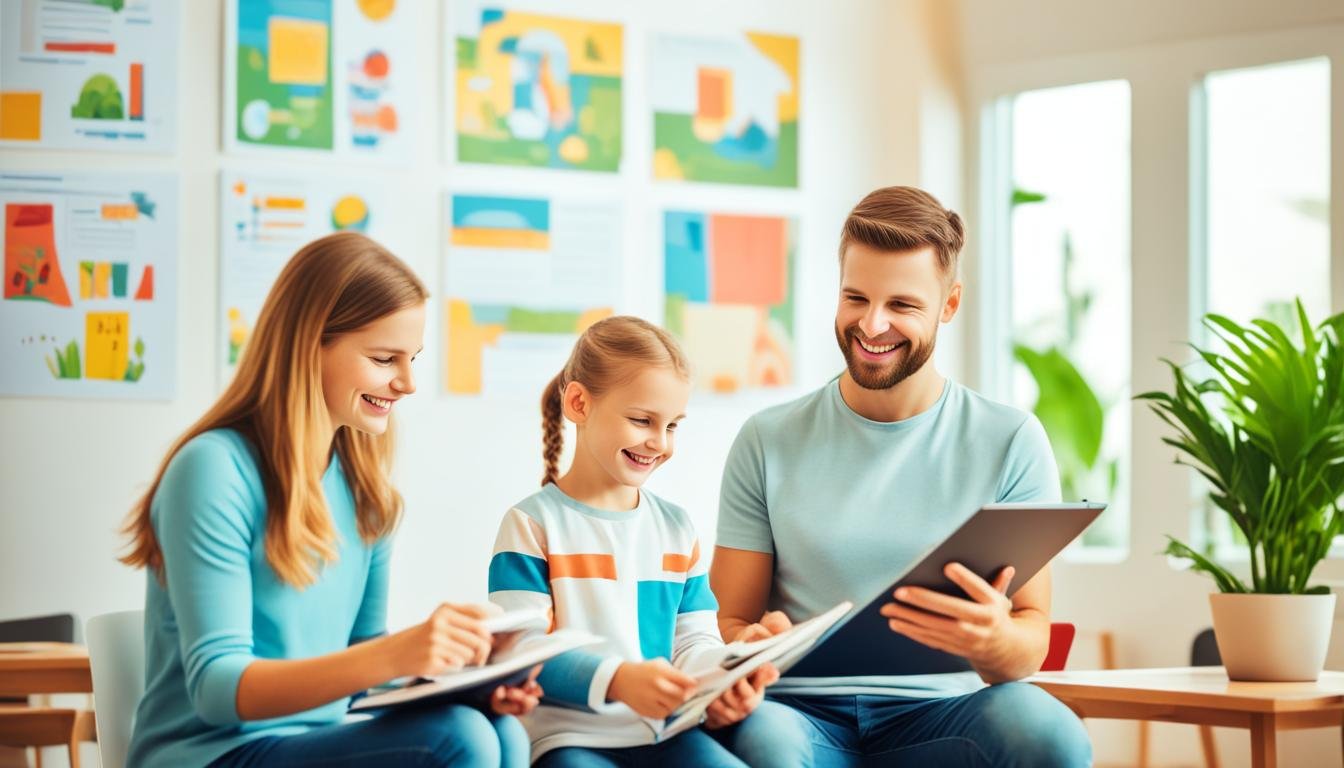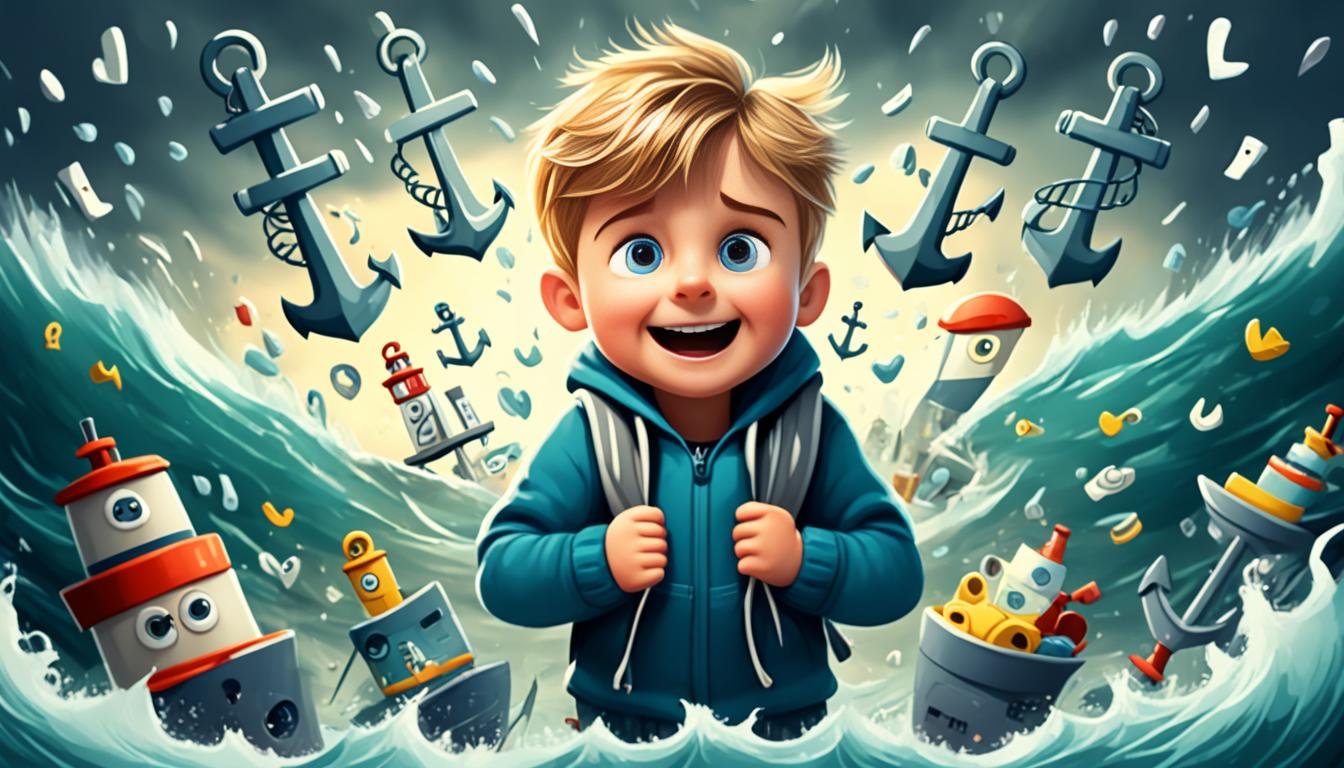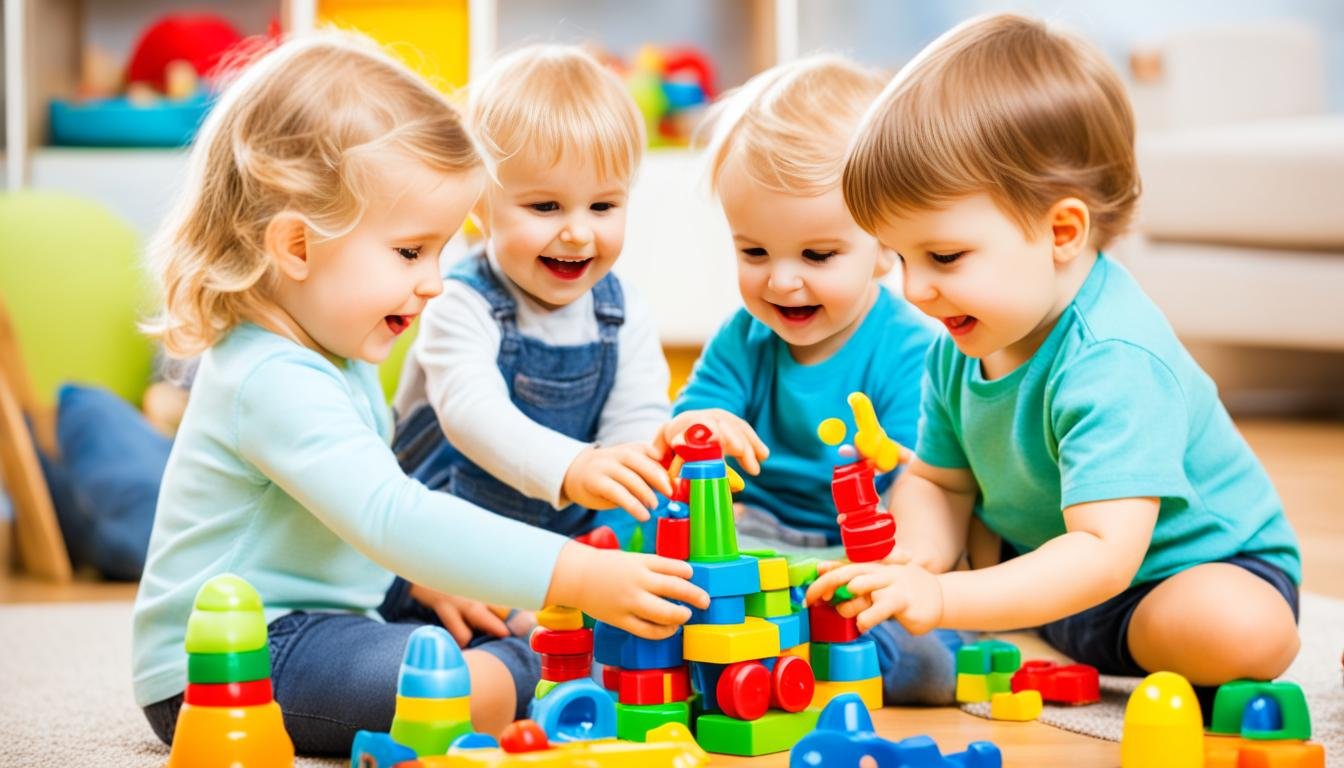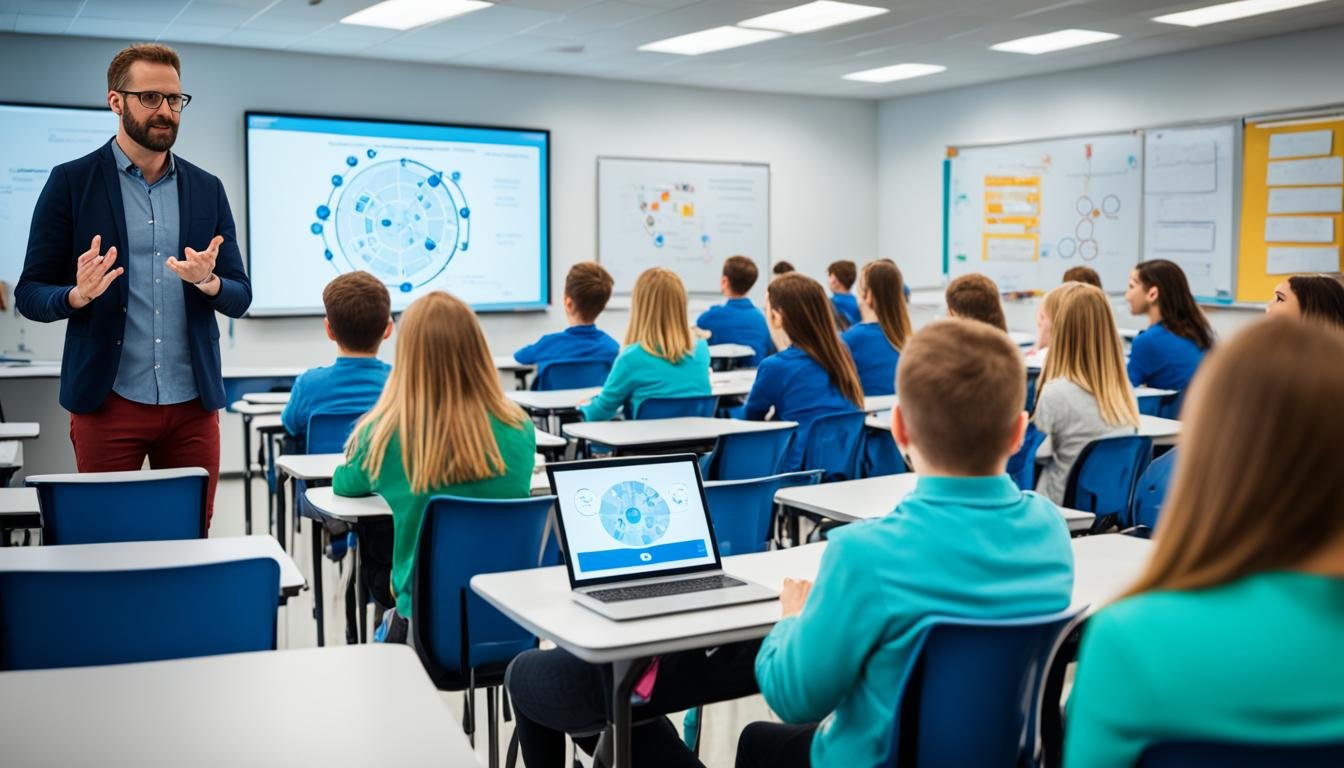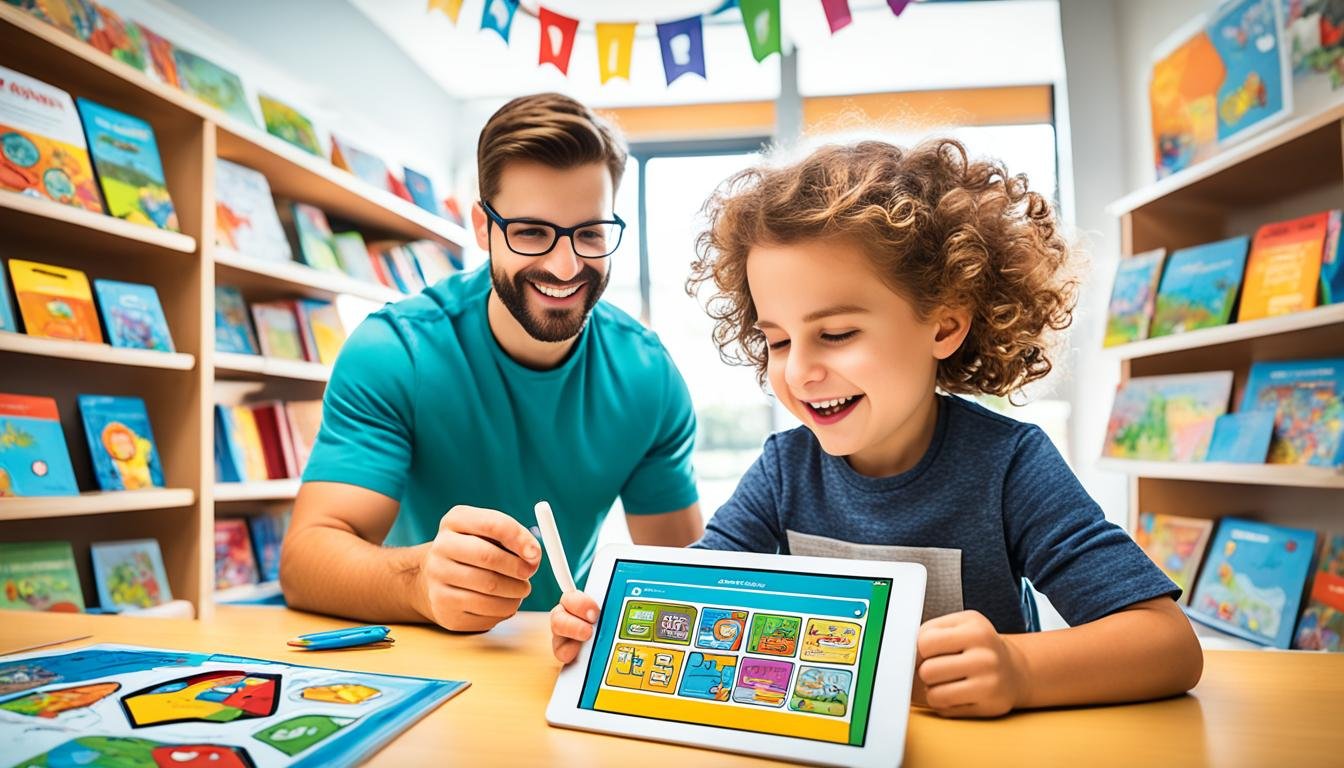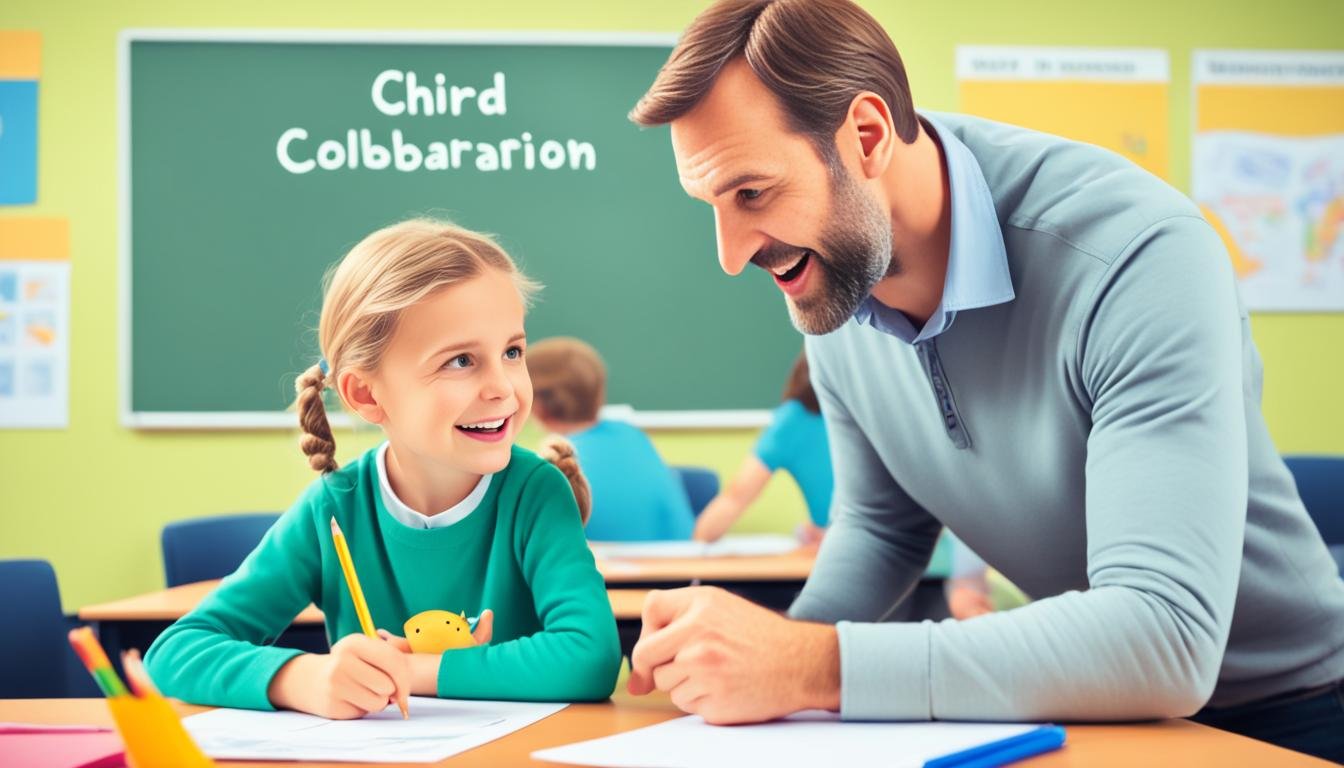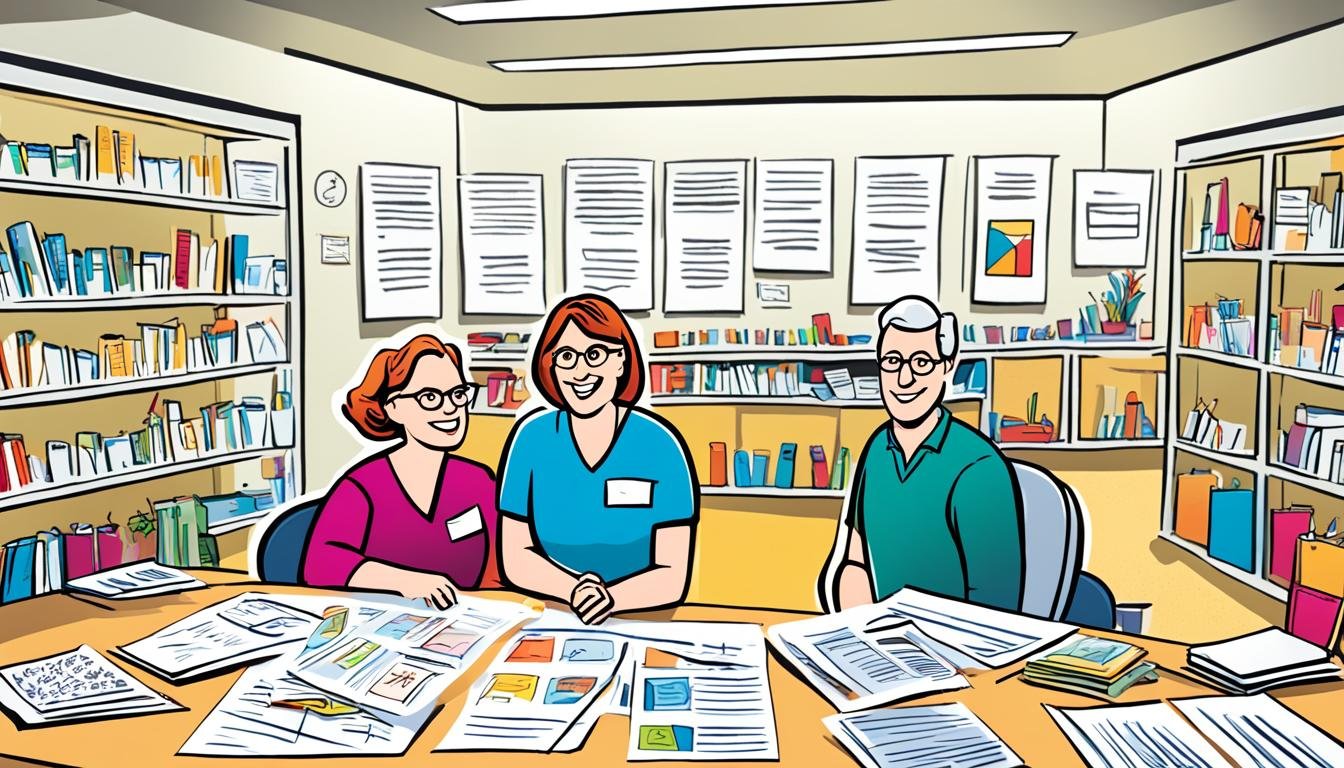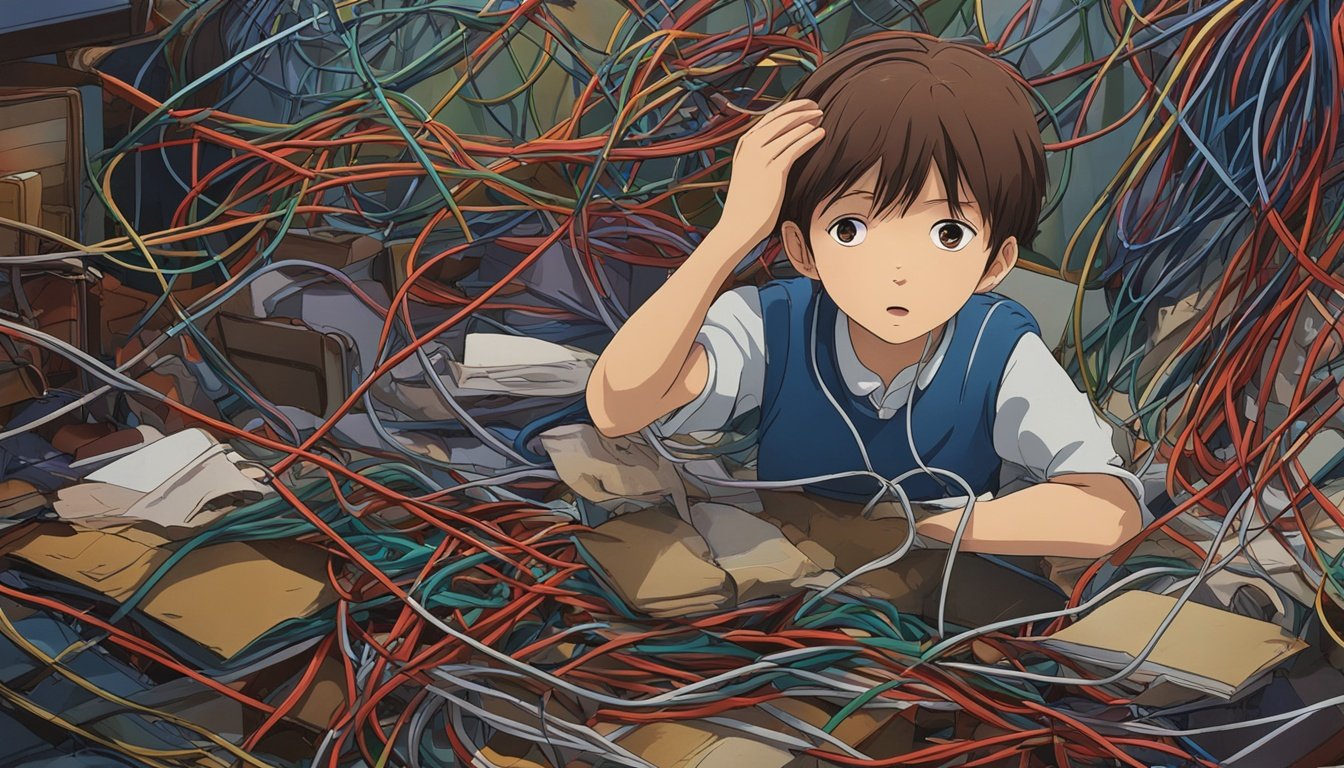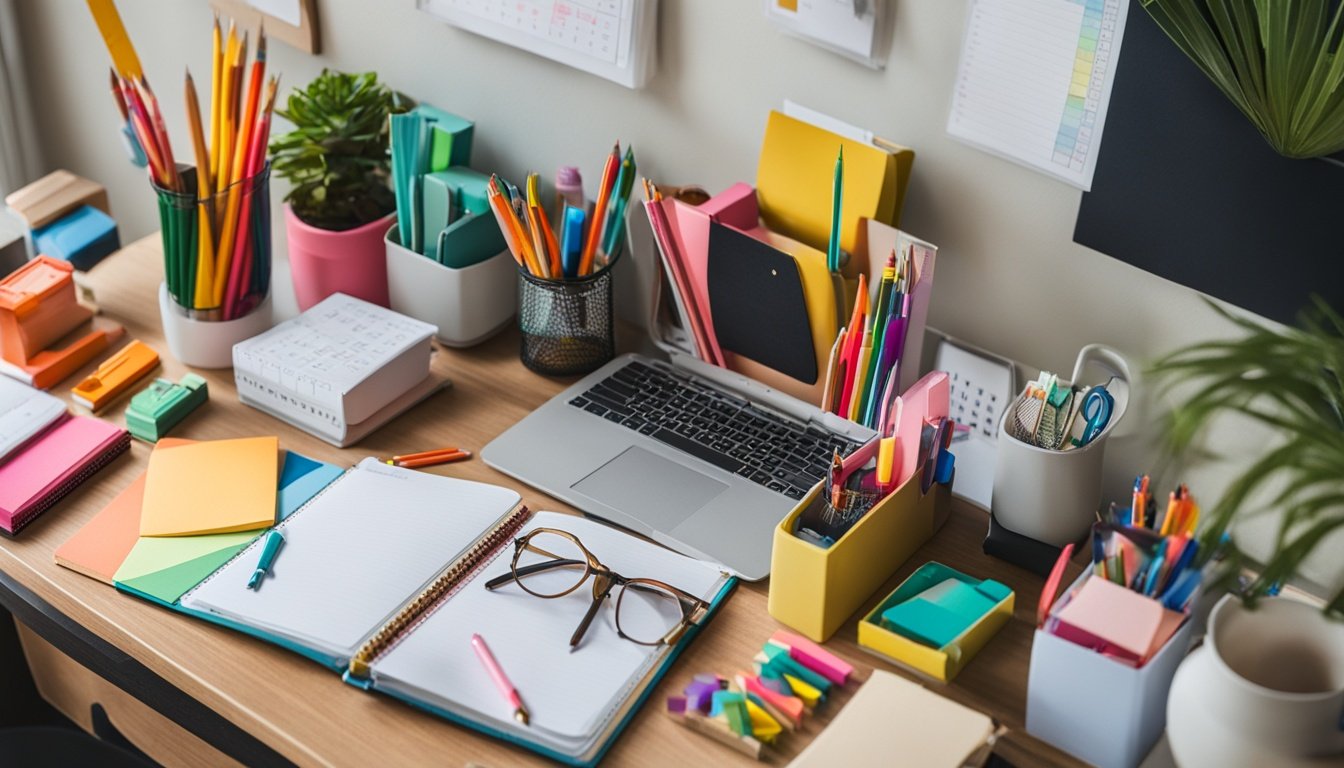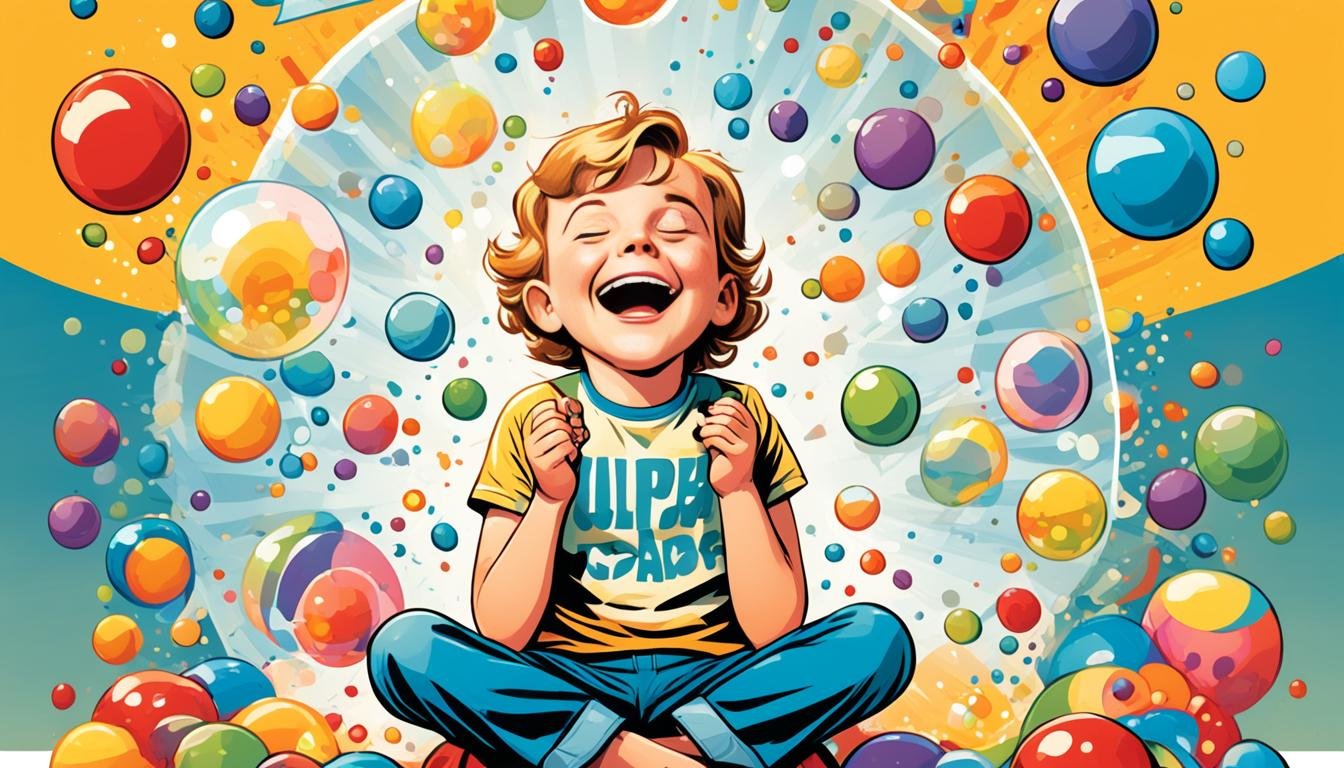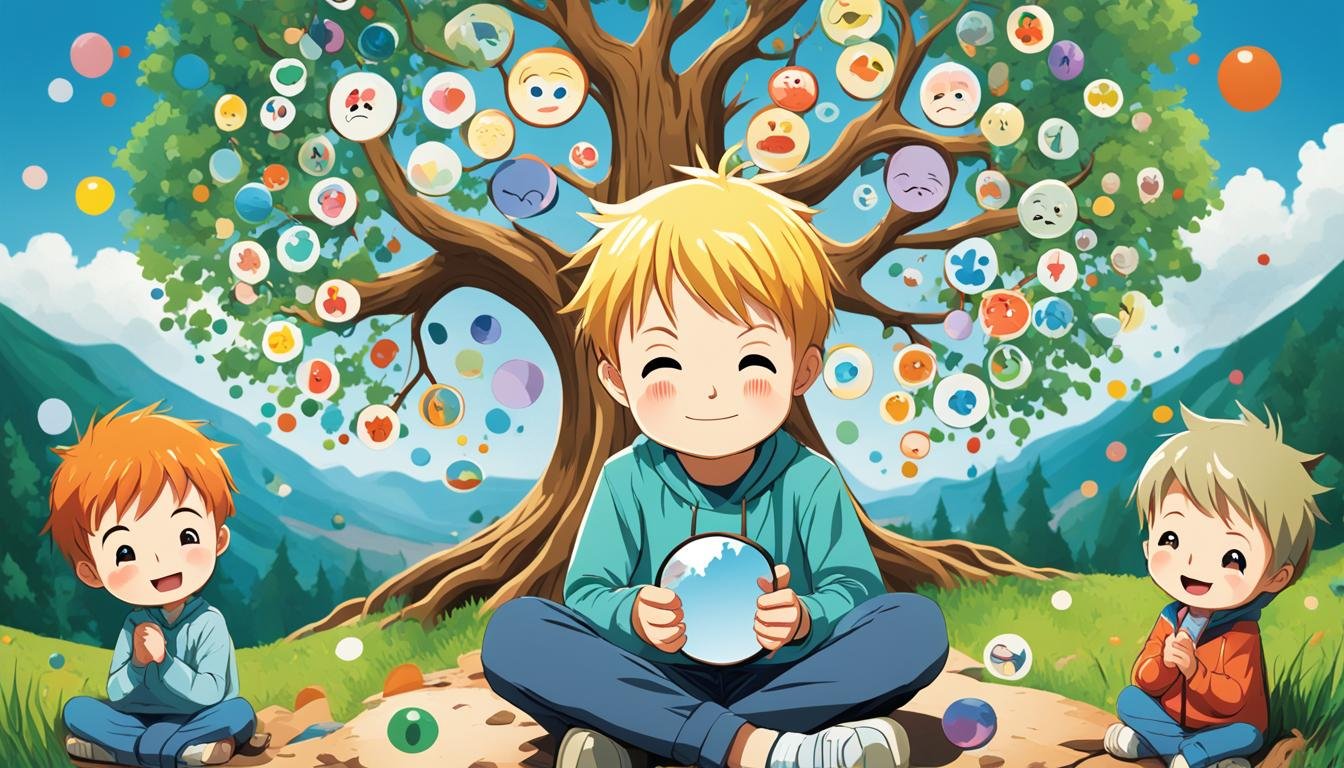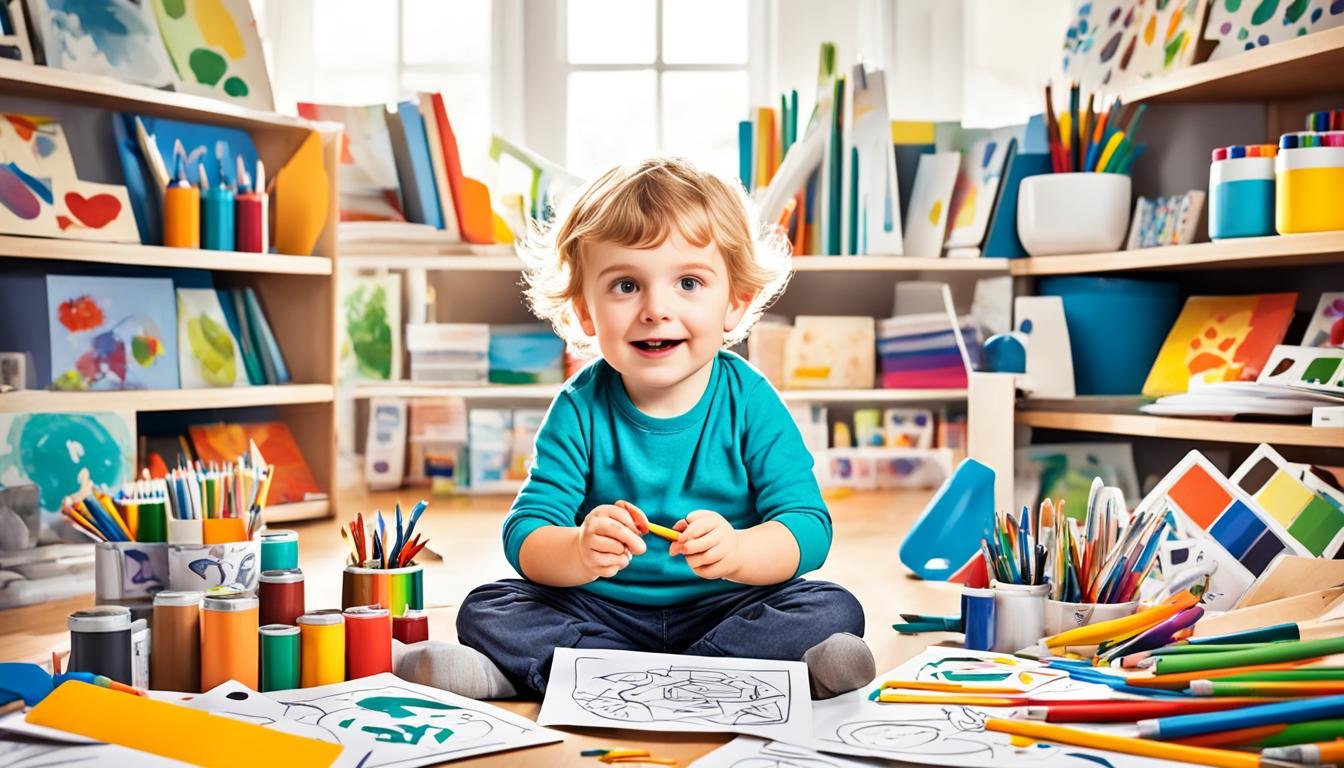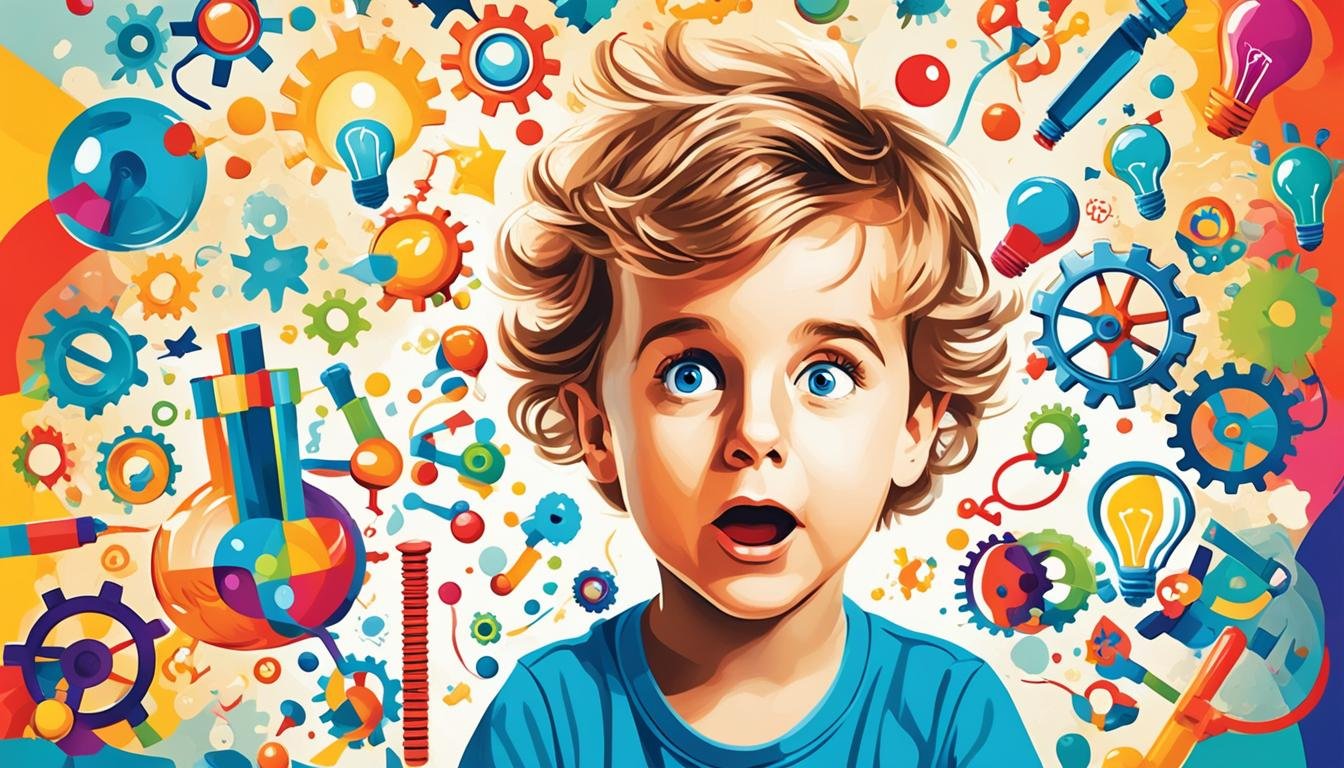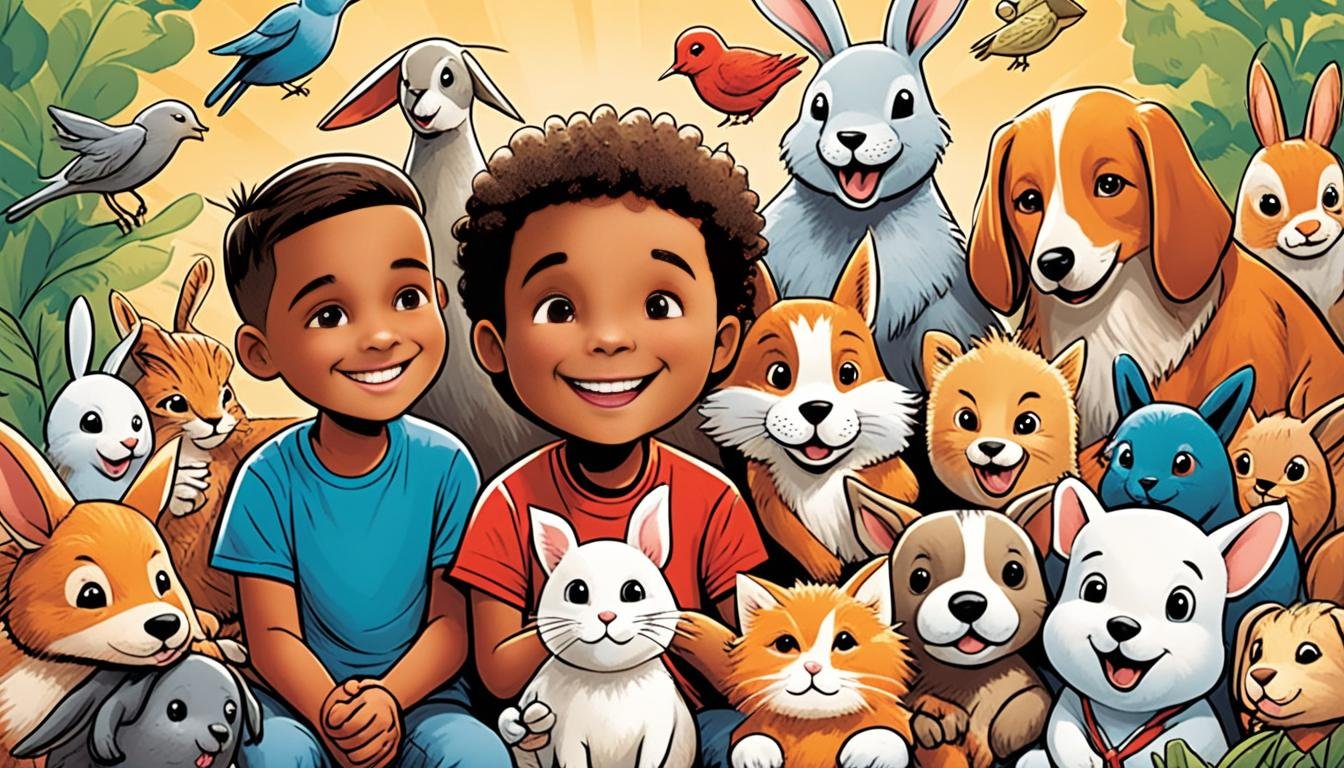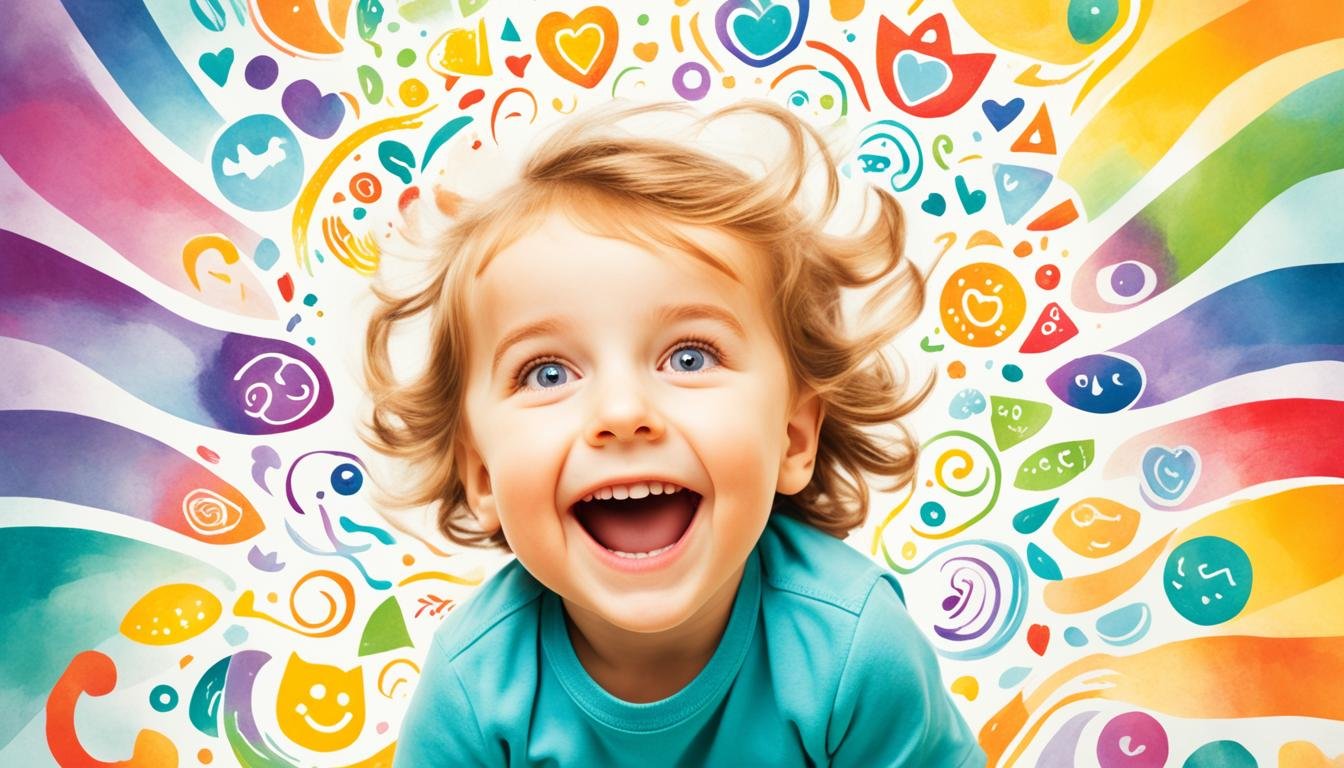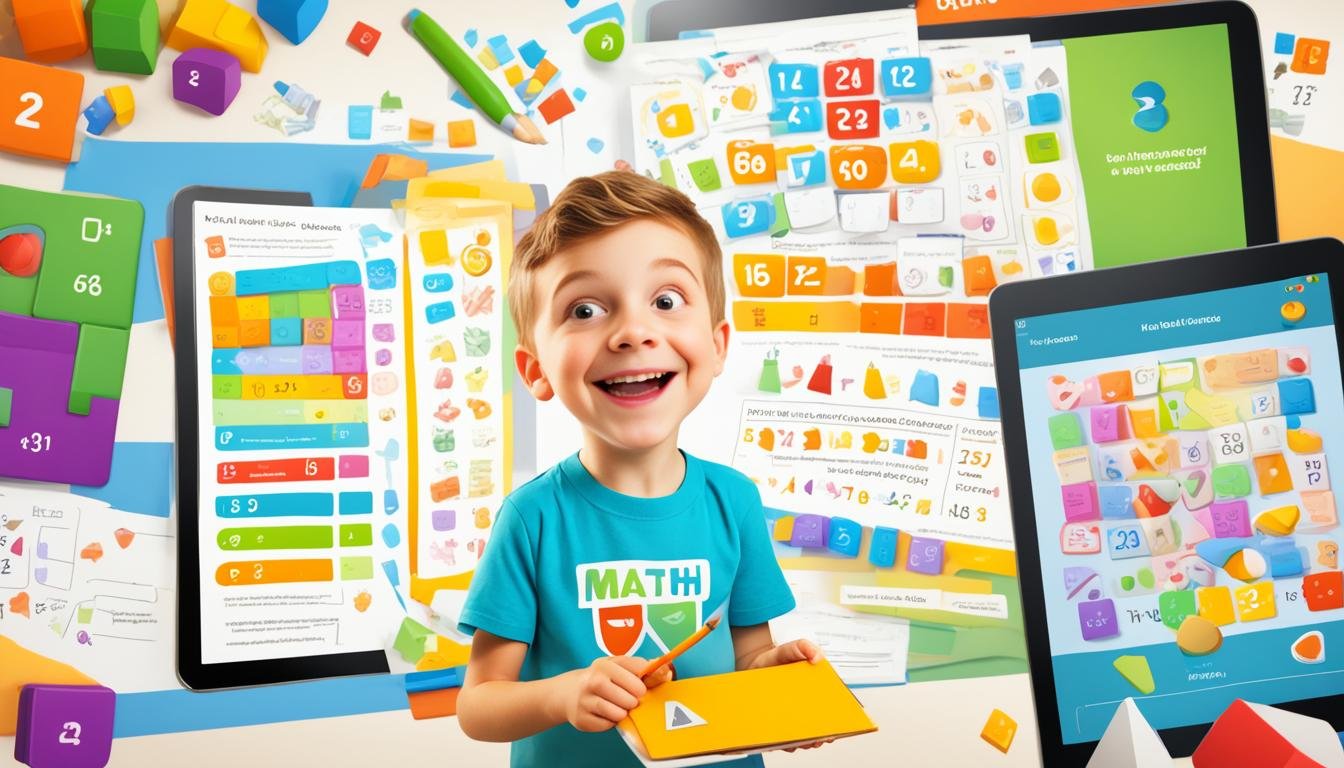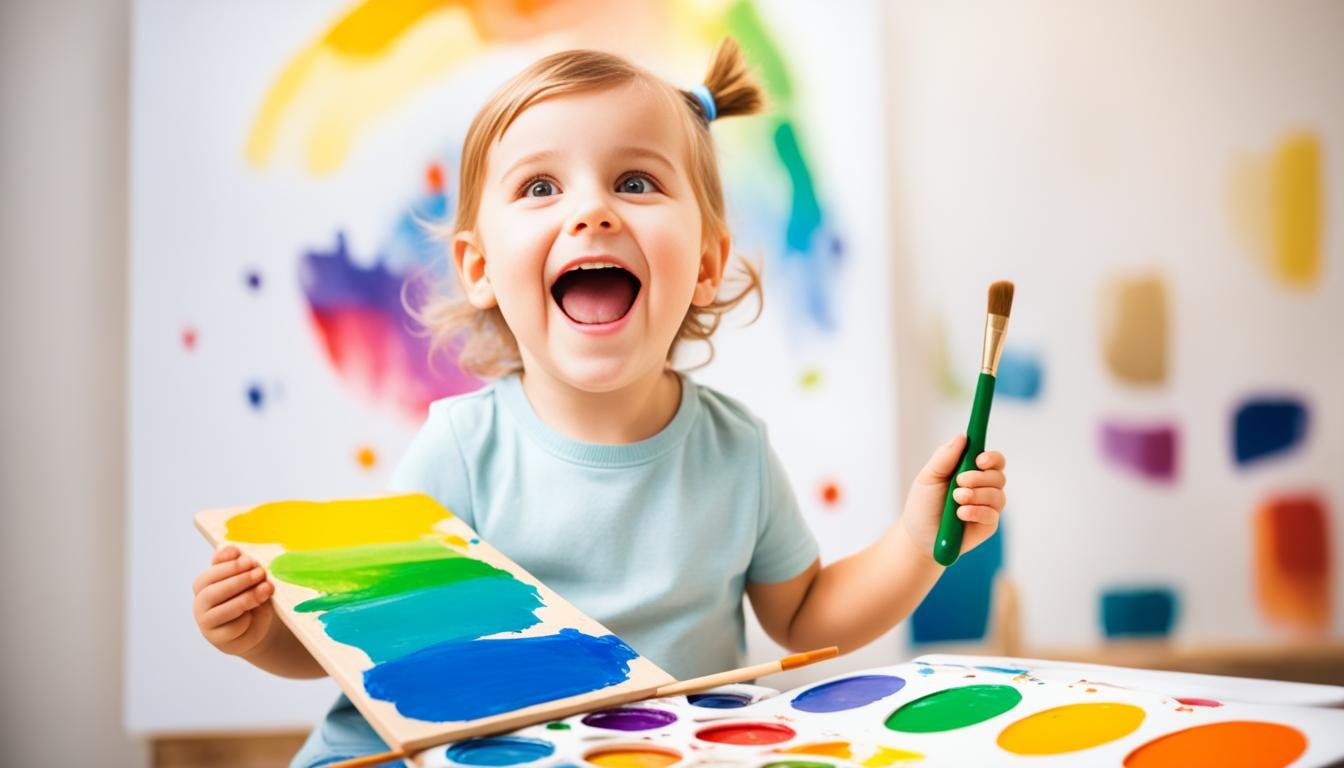Play-based learning is a new way to teach that uses play to help kids grow. It helps kids learn important skills like being creative, working together, and thinking deeply. These skills are key for doing well in school and life today.
Studies from the American Academy of Pediatrics show that play is a key way for kids to learn these skills. It helps them do well in school and with friends.
Parents and teachers see how important play is in learning. They use play-based learning to get kids ready for the future. This way, kids start to love learning and get the tools they need for school.
To find out more about how play affects kids, check out this resource.
Key Takeaways
- Play-based learning centers on children’s growth through engaging activities.
- This educational approach promotes essential skills like creativity and critical thinking.
- Research highlights play as a key vehicle for developing fundamental skills.
- Parents and educators play a crucial role in integrating play into learning.
- Effective implementation prepares children for future academic and social success.
Understanding Play-Based Learning
Play-based learning makes learning fun and central to education. It shows that play and learning go hand in hand. Kids learn best by exploring and discovering through play.
This method helps teachers reach all kinds of learners. It makes learning fun and engaging for everyone.
The importance of play in education is huge. It boosts creativity, social skills, and emotional growth. Kids learn important life skills while having fun.
Play makes learning fun and exciting. It helps kids use their brains and follow their curiosity.
The play-based learning theory guides teachers in creating a well-rounded education. It helps kids do well in school and with friends. This approach makes learning complete.
Teachers learn how to use this theory to help each child grow. It leads to a flexible curriculum that values play. This leads to better learning outcomes.
For more info, check out the terms of use. It talks about how play builds a lifelong love for learning.
The Importance of Play in Education
Play is key to children’s growth and development. It’s not just a break from learning; it’s a way to grow in many areas. Research shows that play helps kids develop important skills like thinking, moving, making friends, and feeling emotions.
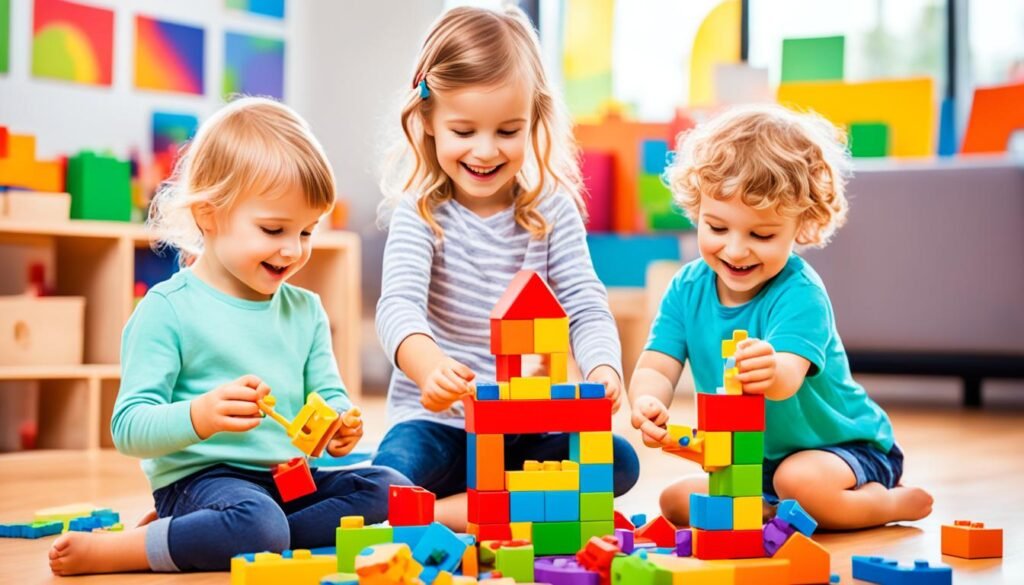
Play lets kids explore, work with others, and think on their own. The benefits of play go beyond fun. They help kids learn to work together, solve problems, and build strong relationships. This builds a sense of community and helps them handle tough times.
Teachers now see the value of adding play to learning. Kids don’t just have fun; they learn skills that help them in school and life. Policies like those at educational websites show how important play is for learning well.
| Aspect | Play-based Education | Traditional Methods |
|---|---|---|
| Child Engagement | High engagement through hands-on activities | Limited engagement often due to structured lectures |
| Social Skills | Promotes teamwork and communication | Less focus on social interaction |
| Creativity | Encourages imaginative thinking | Restricts creative expression |
| Learning Style | Catered to various learning preferences | One-size-fits-all approach |
This table shows how play is better for learning. It makes learning a full experience that helps kids grow and learn important life skills.
Benefits of Play-Based Learning
Play-based learning offers many benefits that help children grow. It makes learning fun and builds important life skills.
Encourages Creativity and Imagination
Play lets kids explore and be creative. They make up stories and characters, which boosts their creativity. This kind of play helps them think differently and learn better.
By using play in school, kids get to learn in a fun way. They discover new things that make their minds work harder.
Fosters Problem-Solving Skills
Play helps kids solve problems and think critically. These skills are key for school and life. They learn to look at problems, decide what to do, and act.
This way, they get better at working with others and talking things out.
Promotes Social Interaction and Cooperation
Play is a great way for kids to be with others. It teaches them to work together and share. They learn to solve problems and make friends.
Being part of a group helps them feel like they belong. It’s good for their feelings and relationships.
For more info on play-based learning, check this out. It shows how important it is for kids to play and learn.
| Benefits of Play-Based Learning | Description |
|---|---|
| Creativity | Enhances imaginative thought and expressive abilities. |
| Problem-Solving | Develops critical thinking and decision-making skills. |
| Social Skills | Promotes cooperation and effective communication among peers. |
| Emotional Development | Supports resilience and emotional regulation. |
Play-Based Learning and Child Development
Play-based learning helps children grow in many ways. It boosts their thinking, feelings, and how they talk. These skills are key for their school success later on.
Enhances Cognitive Development
Play makes learning fun and helps kids think better. They learn to solve problems and use their imagination. This makes them curious and helps them understand the world.
Early play shapes how they process information. This is important for their thinking skills later. For more info, check out this resource.
Supports Emotional Regulation
Play helps kids deal with their feelings. They can express and manage their emotions in play. This is key for their social and emotional health.
Improves Communication Skills
Play is great for talking and listening skills. Kids learn to share and understand each other. This is important for making friends and working together in school and life.
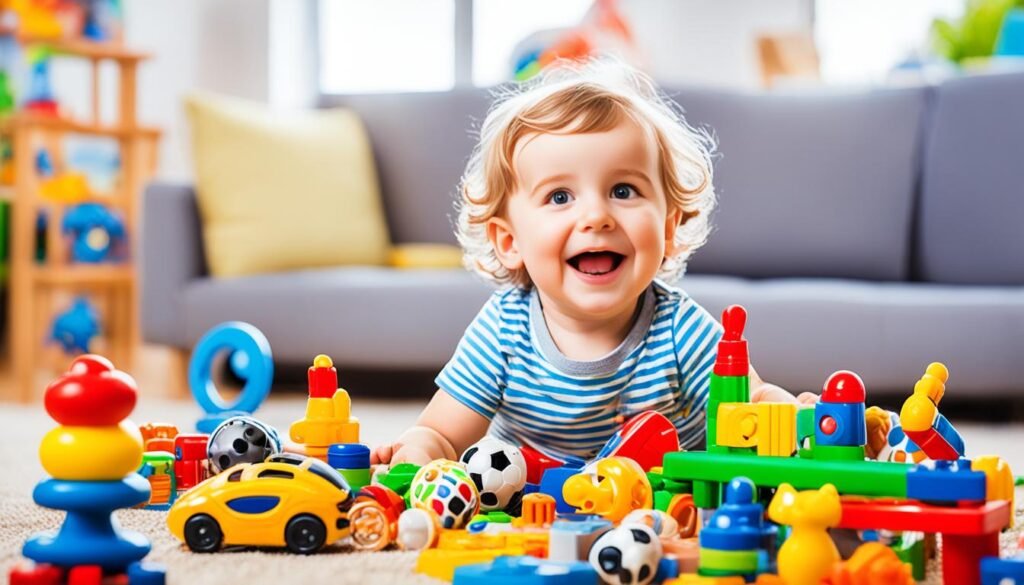
The Role of Hands-On Learning Activities
Hands-on learning is key to a child’s education. It makes learning fun and engaging. Kids get to explore and understand concepts better through these activities.
This method changes boring lessons into exciting experiences. It makes kids want to take part actively.
Examples of Hands-On Activities
Play-based education includes many hands-on activities. These let kids explore and be creative. Here are a few examples:
- Art projects using clay or paints, allowing individual expression.
- Building structures with blocks, promoting spatial awareness and engineering skills.
- Conducting simple science experiments to explore cause-and-effect relationships.
- Gardening activities that teach responsibility and the science behind plant growth.
Incorporating Sensory Play
Sensory play adds a lot to hands-on learning. It uses different textures, colors, and materials to engage the senses. This helps kids learn better and supports their brain development.
Activities like:
- Playing with sand or water, enhancing fine motor skills.
- Using sensory bins filled with rice, beans, or other materials encourages imaginative play.
- Cooking or baking, blending sensory experiences with math and science.
Adding sensory play to hands-on learning helps kids grow in all areas.
Play-Based Learning in Early Childhood Education
In early childhood education, play-based learning in preschool is key. It helps kids grow their curiosity and love for learning. This method also builds social and emotional skills through fun activities.
By using play, teachers make learning fun and interactive. Kids learn by exploring, trying new things, and working together. This way, they get important skills for life.
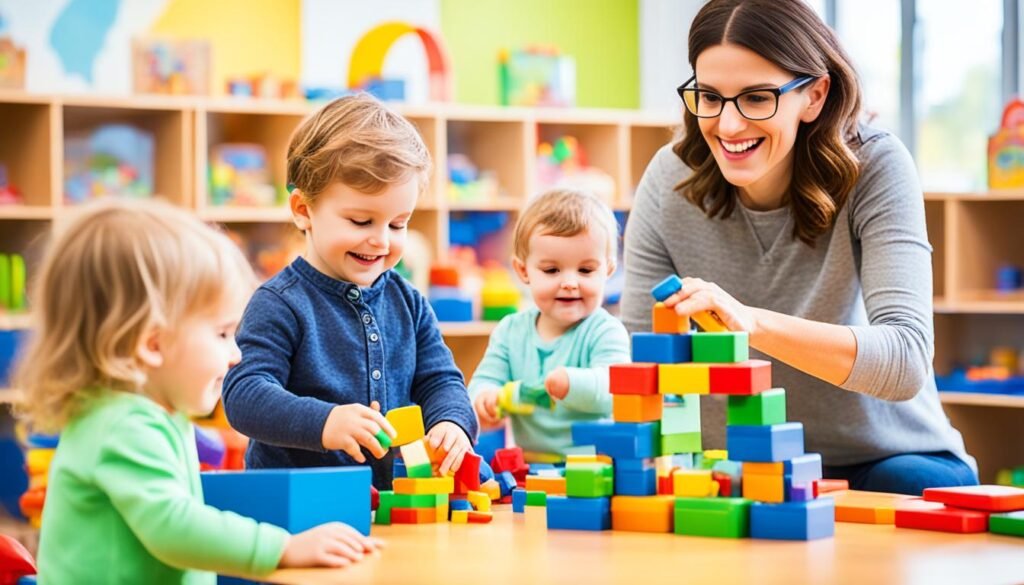
Studies show that play-based learning gets kids ready for school. It makes learning meaningful and helps them remember things better.
| Key Elements of Play-Based Learning | Benefits |
|---|---|
| Hands-On Exploration | Fosters curiosity and problem-solving. |
| Social Interaction | Enhances communication and teamwork skills. |
| Creative Expressions | Encourages imaginative thinking and creativity. |
| Experiential Learning | Promotes deeper understanding of concepts. |
Play-based learning in preschool makes kids love learning. It helps them grow in many areas. This approach gets kids ready for more learning in the future.
Play-Based Learning and the Montessori Approach
The Montessori method combines play-based learning with early education. It creates a space where kids do well. By focusing on child-centered education, kids get to learn at their own speed. This helps them use their natural curiosity.
In Montessori schools, teachers act as guides. They help kids find play-based learning resources that match their interests. This lets kids learn on their own, boosting creativity and real learning.
Montessori education lets kids make their own choices and take charge of their learning. They learn important skills like solving problems and thinking critically through hands-on activities. These activities are designed to engage their senses and relate to real life. This shows how important play is in learning.
Parents and teachers can find more info on these methods. A detailed look at play-based learning and the Montessori approach shows how they help kids grow fully.
The Montessori method focuses on learning that fits each child’s pace and respects their unique way of learning. It mixes structured activities with play. This way, kids get a deeper understanding of the world.
Interactive Learning Through Play
Interactive learning through play helps children grow by making learning fun. It turns educational experiences into lasting memories. Kids show more interest and excitement when they’re involved in fun activities.
How It Enhances Engagement
Playful learning makes kids want to learn more. It lets them explore ideas in a hands-on way, making learning more engaging. Kids learn to work together and think critically while having a great time.
Examples of Interactive Play Activities
Many activities show what interactive learning through play is all about. Here are a few examples:
- Role-playing games that encourage creativity and imagination.
- Team-based challenges that foster cooperation and problem-solving skills.
- Guided storytelling sessions where children can construct narratives collaboratively.
Using these methods gives kids unforgettable learning experiences. It helps them develop a lifelong love for learning.
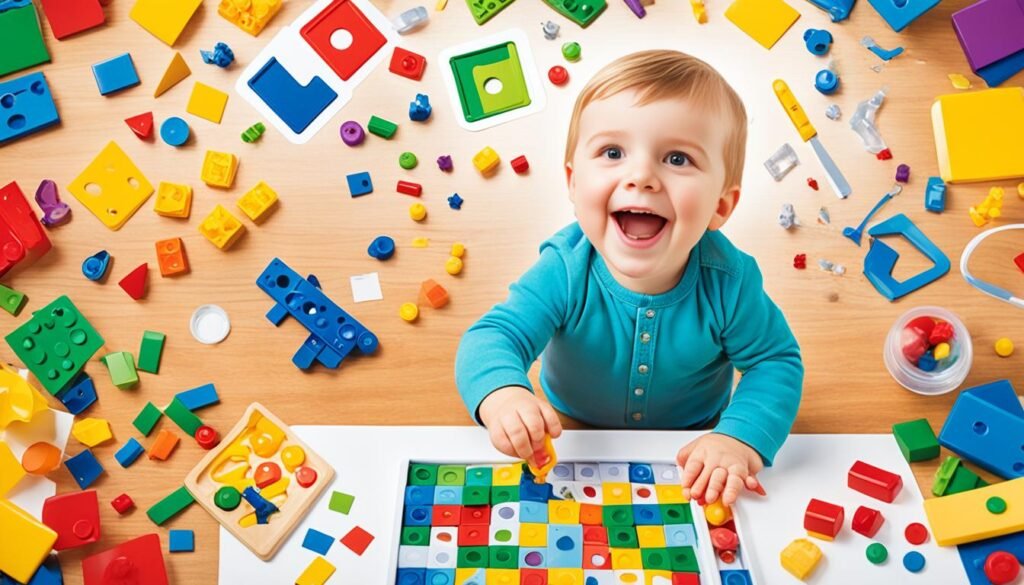
Creative Learning Strategies in Play-Based Settings
Creative learning methods are key to making education fun for kids through imaginative play. This type of play lets kids try out different roles and scenarios. It helps grow their thinking and feelings.
Imaginative Play and its Benefits
Imaginative play is more than just fun. It makes kids think deeply and handle different situations. It helps them understand others by seeing things from their point of view. Plus, it makes them better at working together with friends.
Creative Play Activities
Adding creative play to learning helps kids be more creative. Here are some fun activities:
- Arts and crafts help kids express themselves and improve their hand skills.
- Puppet shows make storytelling better and help kids feel more confident.
- Dramatic play makes kids think critically and solve problems.
These activities spark a child’s imagination, making learning more fun. Using creative play in learning helps kids grow and keeps them excited about exploring and discovering new things.
| Creative Play Activity | Benefits |
|---|---|
| Arts and Crafts | Enhances self-expression and fine motor skills |
| Puppet Shows | Boosts confidence and storytelling abilities |
| Dramatic Reenactments | Promotes problem-solving and critical thinking |
Implementing a Play-Based Curriculum in Schools
Creating a play-based curriculum changes how schools teach. Teachers plan activities that mix play with learning goals. This way, kids enjoy learning and do better.
It takes teamwork to make a play-based curriculum work. Teachers, leaders, and families must work together. They need to understand and support play-based learning. This teamwork makes school better for students.
Play and learning go hand in hand. Kids learn new things during playtime, which keeps them excited about learning. It helps them be curious and love to explore.

| Component | Description |
|---|---|
| Play Stations | Dedicated areas where children can engage in different types of play, such as dramatic play, building, and sensory exploration. |
| Structured Activities | Guided play experiences that link imaginative play to academic objectives, such as storytelling or counting games. |
| Outdoor Learning | Utilizing natural environments for exploratory play encourages physical activity and enhances sensory learning. |
| Parental Involvement | Engaging families in the play-based approach helps reinforce learning at home and maintains consistency across settings. |
This method makes play a key part of learning. It creates a lively learning space. Kids learn by exploring and being creative.
Guided Play vs. Free Play
Understanding guided play and free play is key to helping kids learn. Free play lets kids explore on their own without adult help. Guided play, however, has adults helping to reach learning goals. Both types of play are important for kids’ growth, each with its own benefits.
Understanding the Differences
Free play means kids lead their own activities, exploring and being creative. They decide what and how to play, feeling in charge. Guided play, though, has adults helping to focus on learning goals. It mixes kids’ interests with adult support for better learning.
Benefits of Guided Play
Guided play has many advantages. It makes learning interactive, helping kids understand better. It also boosts critical thinking and resilience by offering challenges at their level. Plus, it helps kids get along with others, learning social skills with teacher guidance.
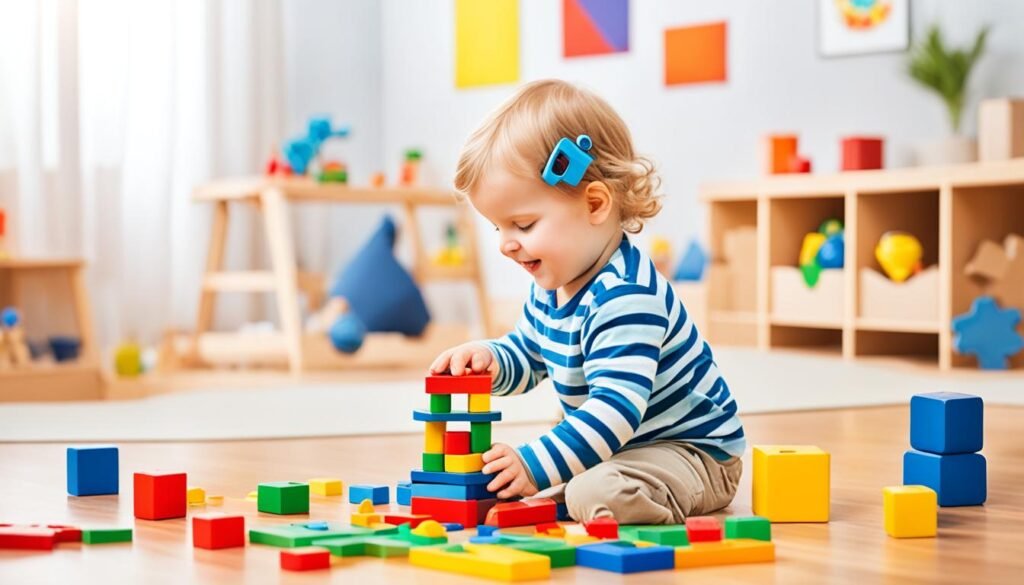
Using Educational Games in Play-Based Learning
Educational games make learning fun and engaging. They fit different learning styles, making sure everyone gets involved. These games mix traditional learning with fun, interactive parts. This mix makes learning more active and exciting.
Types of Educational Games
There are many types of educational games, each focusing on different skills and subjects. Here are a few:
- Board Games: These games help with strategic thinking and teamwork.
- Card Games: They improve memory and critical thinking.
- Interactive Digital Games: These games are great for math, language, and social skills, using technology.
Integrating Games into the Curriculum
Adding educational games to the curriculum means making sure they match learning goals. This way, games are fun and help with learning. Teachers can do this by planning carefully and picking games that support important lessons.
| Game Type | Skills Developed | Age Group |
|---|---|---|
| Board Games | Critical Thinking, Social Skills | 5-12 years |
| Card Games | Memory, Strategy | 6-14 years |
| Interactive Digital Games | Math, Language, Problem Solving | 7-15 years |

Play-Based Learning Activities for Home
Parents are key in making home a place where creativity and discovery happen. Simple activities boost kids’ thinking and social skills. They make learning fun and engaging. Adding different play activities helps kids use their imagination and solve problems in a fun way.
Simple Activities Parents Can Implement
Playing together every day helps kids grow and have fun. Here are some great ideas:
- Building with blocks or LEGO, which helps with spatial thinking.
- Storytelling sessions where kids can share their stories.
- Art projects that let kids be creative.
- Outdoor scavenger hunts that get kids exploring.
- Simple cooking tasks that make math fun through measuring.
These activities make learning through play at home rewarding and fun. They also give families quality time together.
Creating a Play-Friendly Environment
It’s important to make a space that encourages kids to play on their own. This means having materials and resources they like. Here are some tips:
- Setting up different play areas, like building zones or art corners.
- Having versatile materials like cardboard boxes, paint, or play dough.
- Keeping distractions away to help kids focus on their play.
- Encouraging open-ended play where kids make up their own games.
Creating a space that supports play helps kids learn and grow. For more ideas on fun activities, check out play activities for kids that parents can do at home.
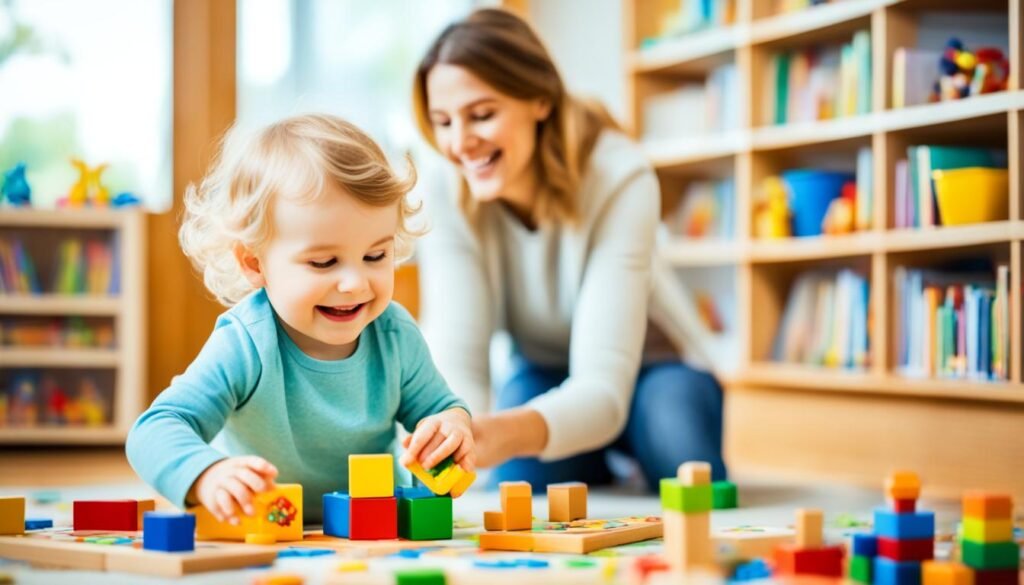
The Role of Educators in Play-Based Learning
Educators are key in playful education. They make spaces where kids can have deep talks and learn from each other. Teachers help kids explore while letting them make their own choices. This way, learning is balanced and fun.
How Teachers Can Facilitate Play
Teachers play a big part in making learning fun for kids. They can make play better by:
- Creating spaces that spark curiosity.
- Offering many materials for kids to explore.
- Asking questions that make kids think and talk more.
- Watching how kids interact to plan better.
- Helping kids work together.
This way, teachers help kids grow in thinking and social skills. And they make learning something kids enjoy doing.
Observing and Guiding Children’s Play
Watching kids play is very important. Teachers need to pay close attention to see what kids like and need. This helps them:
- Help kids learn by adding new ideas to their play.
- Help kids talk and work with each other.
- Keep track of how kids are doing and change plans if needed.
By watching and guiding play, teachers make learning fit what kids naturally want to do. This helps kids keep their curiosity and love for learning.
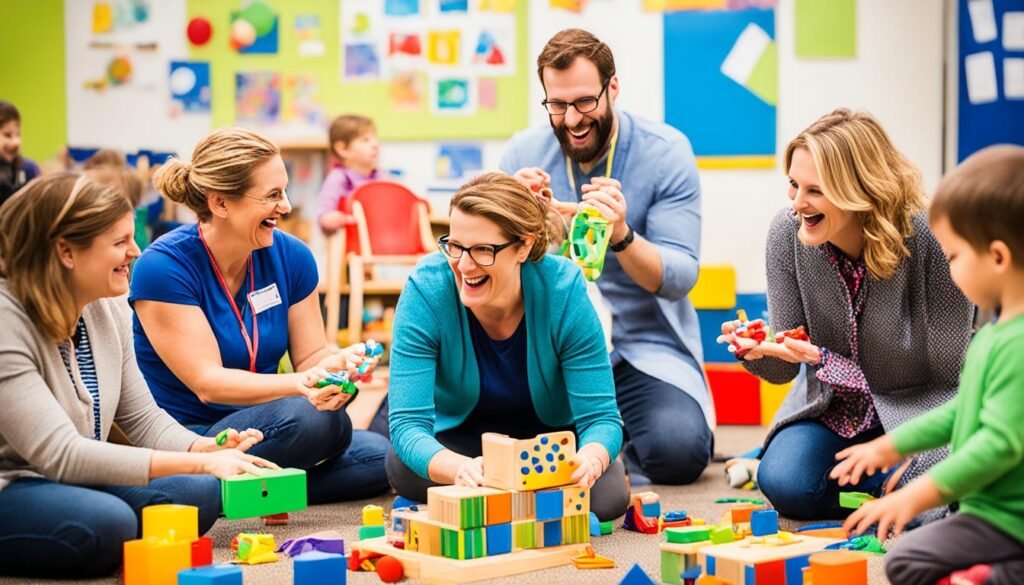
Research Supporting Play-Based Learning
Many studies show that play is a great way to teach young kids. It helps them get better at reading and math. Plus, it helps them grow socially and emotionally.
There are many benefits of play-based learning. Kids learn to solve problems, work with others, and share their feelings. This way of learning makes kids curious and helps them love learning more.
Schools that use play in their teaching have found it works better than old-fashioned teaching methods. Adding play to school makes learning fun and helps kids do well in life and school.
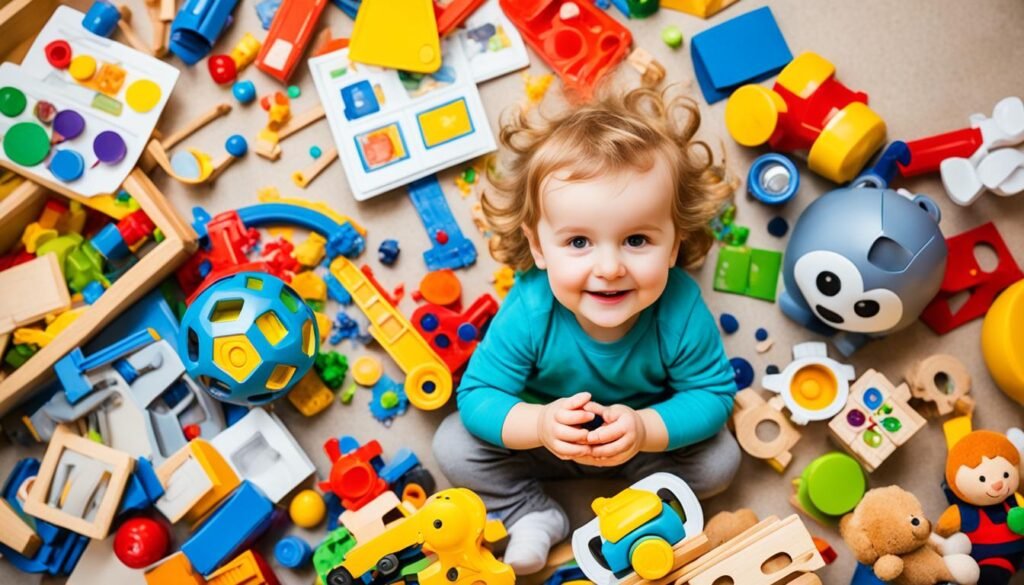
Conclusion
Play-based learning is key to helping kids grow and learn. It helps kids in school and with friends. Through play, kids get important skills for their minds, feelings, and social skills.
Play makes learning fun and builds skills that help kids all through life. As schools change, adding play to lessons is more important than ever. It helps kids grow fully.
Teachers and leaders see how powerful play can be. They aim to make learning fun and full of play. For more on play in early learning, check out the transformative power of play.
